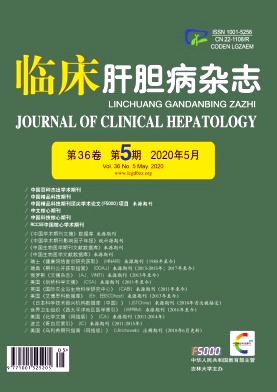Objective To investigate the effect of hepatocyte transplantation(HCT) in the treatment of rats with liver cirrhosis and small-for-size syndrome(SFSS).Methods A total of 40 male Sprague-Dawley rats were given subcutaneous injection of carbon tetrachloride and oral administration of alcohol to establish a rat model of liver cirrhosis, among which 30 were randomly selected and divided into group A(hepatocyte transplantation on day 3 before surgery), group B(hepatocyte transplantation during surgery), and group C(no hepatocyte transplantation), with 10 rats in each group. All rats were given the resection of 70% of the liver, and the groups were compared in terms of survival rate, blood biochemistry at different time points, and change in liver pathological section based on HE staining. An analysis of variance was used for comparison of normally distributed continuous data between multiple groups, and the least significant differencet-test(for data with homogeneity of variance) or the Games-Howell test(for data with heterogeneity of variance) was used for further comparison between two groups; the log-rank test was used for comparison of survival rate.Results Group A had a significantly higher postoperative survival rate than groups B and C [90%(9/10) vs 50%(5/10) and 30%(3/10),χ2= 6. 440,P= 0. 04]. For groups A, B, and C at/L,904.6 ±35.6 U respectively(F =6.808,P=0. 007), the meal level of aspartate aminotransferase(AST) was 896. 3 ± 44. 7 U/L, 923. 8 ± 31. 6 U/L, and950.0 ±16.3 U/L, respectively(F= 3. 666,P= 0. 047), and the mean level of albumin(Alb) was 25. 6 ± 0. 5 g/L, 24. 8 ± 0. 6 g/L,and 23.4 ±0.4 g/L, respectively(F =26.577,P< 0. 001); group A tended to have better recovery than groups B and C, while some/L,128.2 ±20.7 U/L, and 150.5 ±14.8 U/L, respectively(F =13.816,P= 0. 001), the mean level of AST was 108. 7 ± 10. 8 U/L, 142 0±14.1 U/L, and 161.0 ±21.2 U/L, respectively(F =17.220,P< 0. 001), and the mean level of Alb was 29. 1 ± 0. 6 g/L, 28. 0 ± 0 2 g/L, and 27.0 ±0.2 g/L, respectively(F =15.629,P= 0. 001), with significant differences between the three groups. At 72 hours after surgery, liver histopathological examination showed disappearance of hepatic cord, massive hepatocyte necrosis, and inflammatory cell infil-tration in group C, while group A only had balloon-like lesions, punctate cell necrosis, and a small amount of inflammatory cell infiltra-tion.Conclusion Hepatocyte transplantation can effectively promote liver function recovery and improve survival rate of rats with liver cir-rhosis and SFSS, and its therapeutic effect is associated with the time point of transplantation.














 DownLoad:
DownLoad: